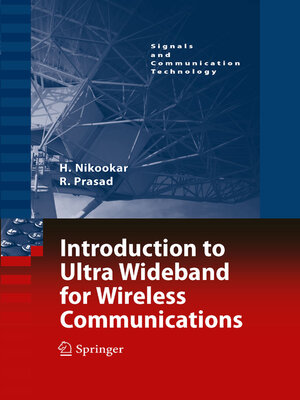Introduction to Ultra Wideband for Wireless Communications
ebook ∣ Signals and Communication Technology
By Homayoun Nikookar

Sign up to save your library
With an OverDrive account, you can save your favorite libraries for at-a-glance information about availability. Find out more about OverDrive accounts.
Find this title in Libby, the library reading app by OverDrive.



Search for a digital library with this title
Title found at these libraries:
| Loading... |
asakta-buddhih sarvatra . jitatma vigata-sprhah . . . . naiskarmya-siddhim paramam . sannyasenadhigacchati Detached by spiritual intelligence from everything controlling the mind, without material desires, one attains the paramount perfection in cessation of re- tions by renunciation. The Bhagvad Gita (18.49) Compared to traditional carrier-based, Ultra-Wide Band (UWB), or carrier-less, systems implement new paradigms in terms of signal generation and reception. Thus, designing an UWB communication system requires the understanding of how excess bandwidth and very low transmitted powers can be used jointly to provide a reliable radio link. UWB offers systems transceiver potential for very simple implementations. Comparison between UWB and traditional narrow-band systems highlights the following features: Large bandwidth enables very fine time-space resolution for accurate lo- tion of the UWB nodes and for distributing network time stamps. Very short pulses are effectively counter-fighting the channel effect in very dense multipath environments. Data rate (number of pulses transmitted per bit) can be traded with power emission control and distance coverage. Very low power density leads to low probability of signal detection and adds security for all the layers of the communication stack. Very low power density is obtained through radio regulation emission masks; UWB systems are suitable for coexistence with already deployed narrow-band systems.






